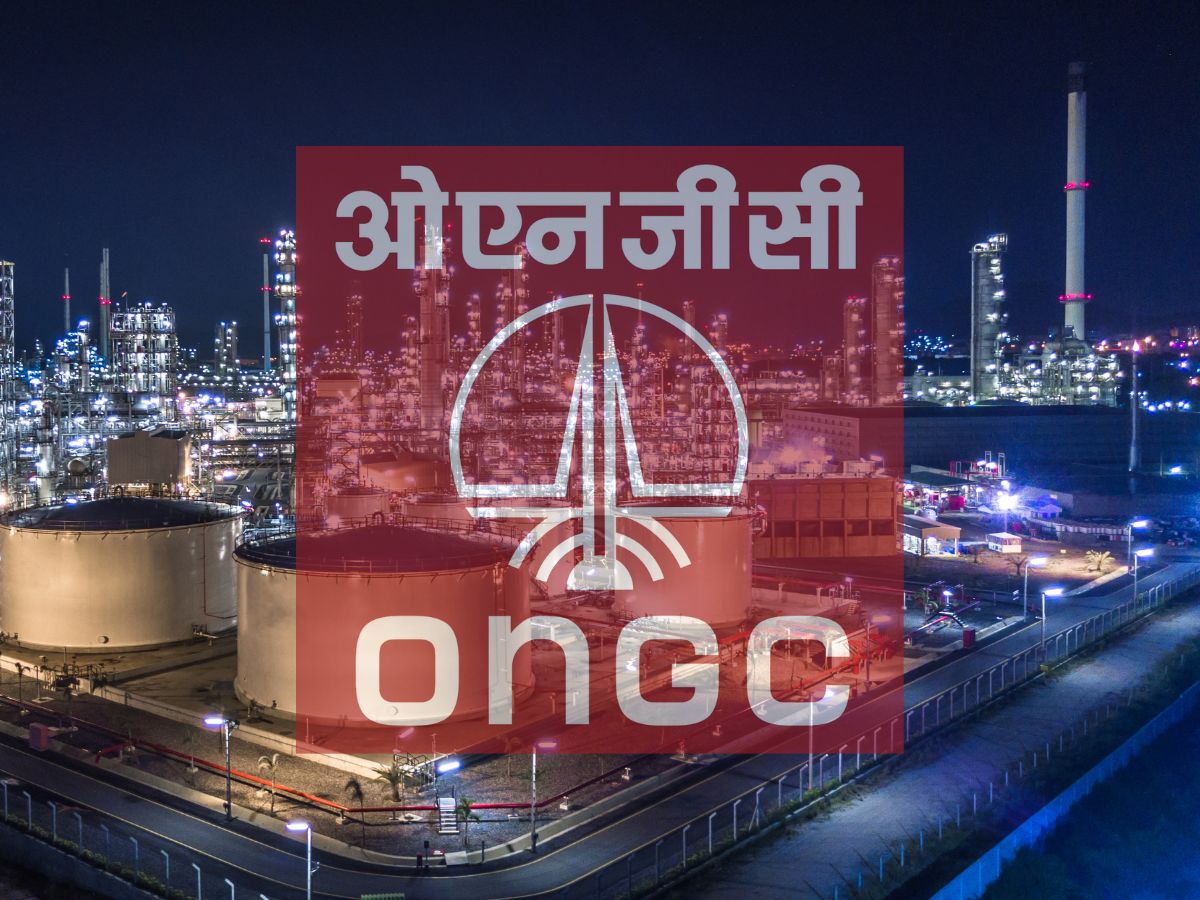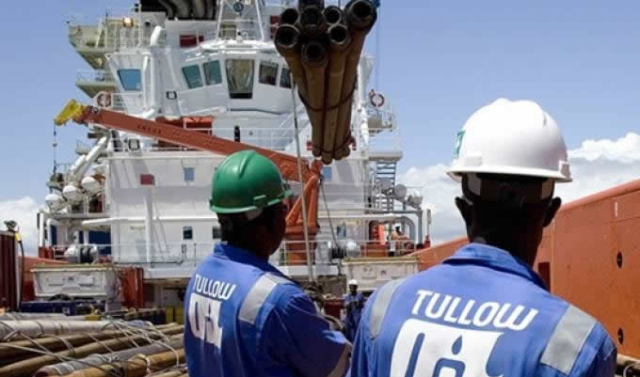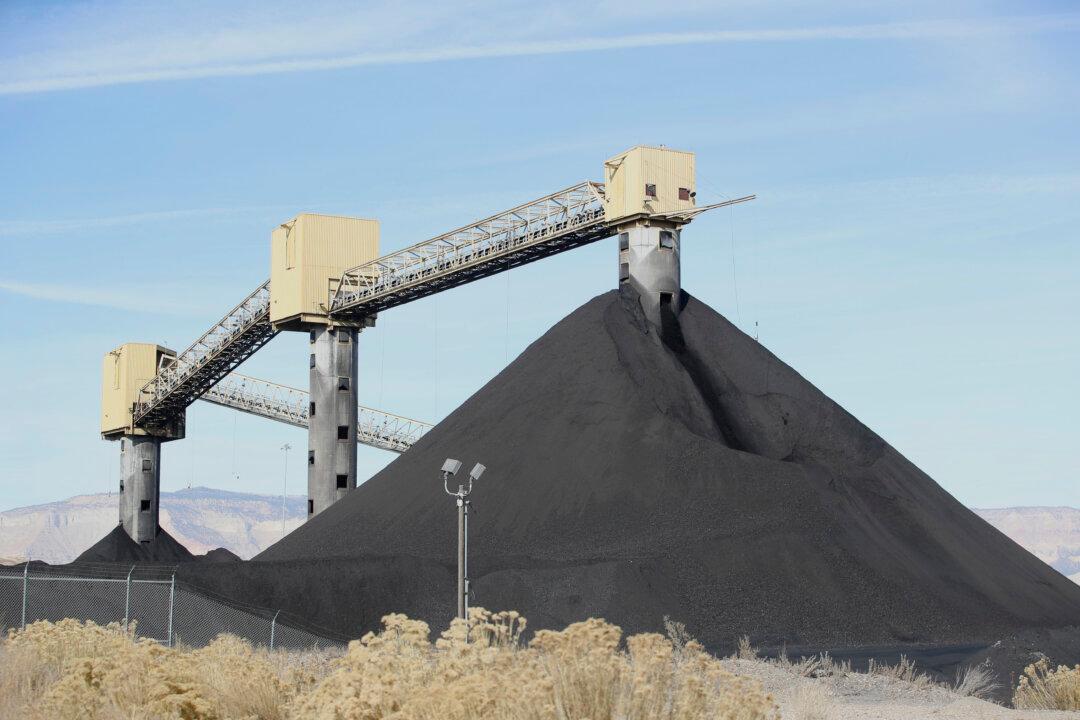Monday, March 31, 2025
Friday, March 28, 2025
Thursday, March 27, 2025
Wednesday, March 26, 2025
India’s ONGC to diversify core business in anticipation of oil glut

(Bloomberg) – India’s largest explorer Oil and Natural Gas Corp. is seeking to diversify its portfolio to shield its core business from volatile oil prices, said Arunangshu Sarkar, director for strategy at the state-run giant.
The company’s multi-pronged approach involves entering the refining and petrochemical sectors, trading liquefied natural gas (LNG) and growing its renewable capacity.
According to the International Energy Agency, the world is entering an era of cheaper energy prices, with growing electricity use leading to a surplus of oil and gas. ONGC is among the several oil majors looking to diversify their business strategies as the global economy moves away from fossil fuels.
“Globally, we are heading to a glut in oil supplies which means prices will reduce,” Sarkar said in an interview. “It will be difficult for a company like ONGC to survive in a low oil-price regime and the new businesses provide a hedge for such a scenario.”
While crude prices decline, production costs for the explorer are on the rise, with easily available oil already extracted and depleted fields yielding little fuel, further squeezing profits.
Sarkar, a petroleum engineer, took charge as ONGC’s first director for strategy in September.
The New Delhi-based company is seeking to book 3 million tons a year of regasification capacity on the country’s western coast and is already discussing long-term offtake deals with city gas retailers, Sarkar said. Since benchmark indices are linked to crude, importing cheap gas to be sold in India can help offset lower profits due to oil volatility, he added.
ONGC is also planning to build its first refinery, with a focus on oil-to-chemicals, Sarkar said, declining to give more details as the plan is still at a nascent stage. At a group level, ONGC already has a refining capacity of 1 million bpd, or a fifth of India’s total, through its units Hindustan Petroleum Corp Ltd. and Mangalore Refinery and Petrochemicals Ltd.
Refiners are increasingly turning to petrochemicals as the spread of electric vehicles is projected to dent demand growth for diesel and gasoline.
The third pillar of diversification is clean energy. The company has
set a target to reach 10 gigawatts of renewable capacity by 2030, about
three times more than now. It will soon be seeking bids to build 1
gigawatt of solar and wind power capacity for its captive use, Sarkar
added.
Tullow Oil focuses on Ghana as part of debt reduction strategy

(Bloomberg) – Tullow Oil Plc will pump as much as it can from mature assets in West Africa this year as part of plans to bring debt below $1 billion.
The company has been chipping away at borrowings accumulated during its days as a free-spending wildcatter. Former CEO Rahul Dhir, who left earlier this year, retooled the producer to focus on established assets in Ghana rather than extensive exploration in an effort to shore up finances.
“In the year ahead, our priorities are to progress our refinancing plan” and “optimize our production activities at Jubilee and TEN” in Ghana, Tullow said Tuesday in a statement. Disappointing output from some fields in 2024 weighed on annual profit, which was less than a quarter of average analyst estimates.
Yet investors were encouraged by a $300 million agreement to divest assets in Gabon, announced Monday. Tullow shares jumped on the news and extended gains on Tuesday, climbing as much as 7.6%. The company’s bonds also rose.
“This marks another stage of delivery in management’s plan to reduce net debt towards a target of under $1 billion and refinance its capital structure,” James Hosie, an equity analyst at Shore Capital, said in a note to clients.
Production in 2024 was lower than a year earlier and will continue to slide. Tullow expects to drill two new wells at the Jubilee deposit, starting in May, to curb natural decline.
“We have absolute confidence in the Jubilee field to deliver material cash flows and provide the business with optionality for returns and growth, once our net debt target of below $1 billion is reached,” interim CEO Richard Miller said.
Dhir reduced net debt to $1.45 billion from $2.81 billion during his tenure.
Tuesday, March 25, 2025
Monday, March 24, 2025
Thursday, March 20, 2025
Wednesday, March 19, 2025
Tuesday, March 18, 2025
Trump Says He’s Authorizing Use of Coal for Energy Production

President Donald Trump said on Monday that he was authorizing his administration to use coal-fired power plants for energy production to counter China’s economic advantage.
Trump stated that he would move to authorize his administration “to immediately begin producing energy with BEAUTIFUL, CLEAN COAL,” but did not provide further details.
The move would mark a major reversal in U.S. environmental policy, as the country has shifted away from coal, which was its primary fuel for electricity generation in the 2000s, toward lower-cost alternatives such as natural gas and renewable energy.
Trump stated in his order that “burdensome and ideologically motivated regulations have impeded the development of these resources, limited the generation of reliable and affordable electricity, reduced job creation, and inflicted high energy costs upon our citizens.”
The EPA outlined its planned regulatory rollbacks in a series of statements, targeting rules or suites of rules initially authored by the agency and published during the administrations of Presidents Barack Obama and Joe Biden, which it considers to be the origin of “trillions in regulatory costs.”
The EPA stated that it would reconsider the previous administration’s rules on power plant emissions, commonly referred to as the “Clean Power Plan 2.0.”
It stated that the Supreme Court had struck down a 2015 version of the Clean Power Plan. In that ruling, the court “barred EPA from misusing the Clean Air Act to manipulate Americans’ energy choices and shift the balance of the nation’s electrical fuel mix,” according to the EPA.
Earlier this month, Interior Secretary Doug Burgum suggested that the United States should restart its shuttered coal-fired power plants to meet surging electricity demand.
“I think as part of the national energy emergency which President Trump has declared we’ve got to keep every plant open,” Burgum said in an interview with Bloomberg. “And if there have been units at a coal plant that have been shut down, we need to bring those back on.”
Burgum also stated that the country should keep existing coal-fired power plants operational by easing environmental regulations imposed by previous administrations.
Monday, March 17, 2025
Thursday, March 13, 2025
Wednesday, March 12, 2025
Tuesday, March 11, 2025
African national oil companies (NOCs) partnering with independents to drive E&P
Africa’s national oil companies (NOC) are moving beyond operating as state-representatives by transforming themselves into competitive upstream players. By strengthening their balance-sheets through partial privatization, transferring their regulatory roles to independent entities and acquiring more assets, NOCs are emerging as strong partners for foreign firms.
Boosting production
Major oil producers in Africa are striving to boost production and NOC-IOC collaboration is at the forefront. Libya’s NOC is working with IOCs Repsol, bp, TotalEnergies, ConocoPhillips and more to increase output to two million barrels per day (bpd). In collaboration with the NOC, TotalEnergies has achieved a 20% increase in production at the Waha field; Repsol plans to drill nine new prospects in 2025; while Eni is planning four exploration wells in 2025. Algeria’s Sonatrach will increase hydrocarbon production by 2.5% this year, actively pursuing international partnerships following a revision of its Hydrocarbons Law in 2029. Negotiations are underway with ExxonMobil and Chevron to boost exploration. These efforts reflect a broader trend across the continent, where NOCs are leaning on foreign partnerships to advance oil and gas production.
Advancing gas monetization
Amid a surge in gas monetization, Africa has emerged as a major LNG producer. Collaboration between NOCs and IOCs have been at the forefront of this gas drive, leading to the emergence of new LNG exporters. Senegal’s Petrosen and Mauritania’s SMH worked alongside bp and Kosmos Energy to develop the Greater Tortue Ahmeyim LNG project – situated on the maritime border of the two countries and producing first LNG in January 2025. Mozambique’s ENH is working closely with foreign operators to develop several LNG projects, including TotalEnergies (Mozambique LNG); ExxonMobil (Rovuma LNG) and Eni (Coral South and Coral North). The 3.4 mtpa Coral South FLNG project has been operating since 2022 while ExxonMobil plans to make FID on Rovuma LNG in 2026.
The Tanzania Petroleum Development Corporation is developing the Tanzania LNG project, working with Shell and Equinor to monetize resources in Blocks 1, 2 and 4. While development has been delayed, the operators remain committed to collaboratively bringing the project online. In Angola, which has been an LNG producer since 2013, the NOC Sonangol is working with its New Gas Consortium partners Azule Energy, Cabinda Gulf Oil Company and TotalEnergies to increase LNG production capacity. The partners completed the offshore platform for Angola’s first non-associated gas project in February 2025, with production on track for early-2026.
Unlocking new E&P markets
A slate of discoveries in recent years have opened up new oil and gas plays across the continent. Following an increase in its oil and gas budget from $120 million to $246 million for the 2024/2025 period, the Uganda National Oil Company (UNOC) is driving exploration across underexplored areas in the country. In partnership with TotalEnergies and CNOOC, the company will start production at the Kingfisher and Tilenga oilfields in 2025. UNOC is also advancing exploration in the Moroto-Kyoga basins, with preliminary studies aimed at uncovering new oil fields.
In Namibia, NAMCOR is working with IOCs toward first oil production from the Orange Basin by 2029. Major projects include the Mopane field, which made its third discovery last month, and the Venus field, which targets FID in 2026. The company aims to secure higher stakes in future oil and gas projects – increasing its share from the minimum 10% to between 20-30% - underscoring a commitment to greater participation in field development.
Meanwhile, the South Africa National Petroleum Company (SANPC) – launched in September 2024 – strives to facilitate greater investment in exploration, natural gas monetization and infrastructure development. While major gas deposits were found in the Outeniqua Basin in 2019 and 2020, operational challenges have impacted development. The SANPC seeks to address these challenges through IOC collaboration and foreign investment. The company also strives to unlock the potential of the Orange Basin.
“African NOCs are driving the continent’s next wave of innovative oil and gas developments. By partnering with global operators and strengthening their operational capacity, NOCs are not only driving projects forward but showcasing the competitiveness of African operators,” states Tomás Gerbasio, VP Commercial and Strategic Engagement, African Energy Chamber.
Monday, March 10, 2025
ADNOC looks to purchase U.S. natural gas fields as part of expansion strategy
(Bloomberg) – The United Arab Emirates’ biggest oil company is seeking to buy its first natural gas producing fields in the U.S. to deepen its presence in the country, according to people familiar with the matter.
Abu Dhabi National Oil Co. wants the deals to complement its recent acquisitions of chemical plants and liquefied natural gas export facilities in the U.S., said the people, who asked not to be identified discussing confidential information.
ADNOC CEO Sultan Al Jaber is set to outline the government-owned producer’s investment strategy, including a U.S. focus, during a speech at the CERAWeek by S&P Global energy conference in Houston on Tuesday, according to some of the people. He’ll then visit Washington, DC for meetings related to both his roles at ADNOC as well as his position as minister of industry and advanced technology.
The UAE’s approach is likely to appeal to U.S. President Donald Trump’s drive to attract investment to America and boost energy production. Emirati companies have discussed building data centers in the U.S. and the two countries are cooperating in technology and AI initiatives. Firms from Japan to India have said they’re looking for more energy deals.
It’s not yet certain if ADNOC has a specific acquisition target, or if the company will end up making an offer for an asset. ADNOC declined to comment.
The company’s interest in gas producing assets comes at a time market-watchers are expecting a slowdown in dealmaking in U.S. upstream assets, particularly in the prolific shale industry as some of the best targets have already been snapped up. Still, in the first month of the Trump administration, the appetite for deals was showing some signs of revival.
Buying into gas-producing fields would give Adnoc access to both fuel and feedstock for its chemicals plants and LNG export facilities. It would also benefit from any increases in local gas prices, hedging its exposure as a buyer of the fuel.
Friday, March 7, 2025
Thursday, March 6, 2025
Middle East oil prices drop as OPEC+ decision rattles market

(Bloomberg) – Oil prices in the Middle East tumbled as the prospect of higher supplies from OPEC+ sparked a selloff in the region’s crudes.
The cost of Oman crude on the Gulf Mercantile Exchange slipped below Brent on Tuesday for the first time since late 2024, according to data compiled by Bloomberg. That marks the end of the Middle Eastern grade’s longest run of premiums over the global benchmark since 2023.
OPEC+ jolted the global oil market this week, saying it would proceed with a plan to revive halted production in tranches from April. The decision — which over time may expand its supplies by more than 2 million barrels — ran counter to most analysts’ expectations. The shift helped to drag futures broadly lower, adding to investors’ concerns just as they dealt with escalating trade tensions.
Traders flagged oversupply concerns stemming from the OPEC+ supply plan, as well as from the possibility of a change in Washington’s stance toward tough sanctions on Russia. Meanwhile, sensitive supplies of Iranian and Russian crudes continue to flow to customers in China, albeit with some hurdles.
Key timespreads that gauge the health of the region’s Dubai benchmark also slumped. The difference between the second- and third-month contracts narrowed to just 38 cents on Tuesday, compared with $2.55 in late January, according to data from broker PVM Oil Associates Ltd.
The move indicates cooling concerns about tight supply, and is a sign that the bumper premiums seen in Middle Eastern markets after US sanctions on Russian and Iranian oil earlier this year aren’t being sustained.
At that time, there was a scramble for alternative crudes from the Middle East that ultimately spurred some of the biggest price increases for regional producers in years. That rally didn’t endure, and now those contracts are the most actively traded, compounding recent declines.
Weaker timespreads have weighed on Dubai more than Brent, causing the differential between the London and Middle East marker — known as the EFS — to widen to 84 cents a barrel versus 31 cents last week.
Those moves have forced the window for arbitrage cargoes from Europe
and the US to Asia to “slam shut”, according to Neil Crosby, an analyst
at Sparta Commodities.




